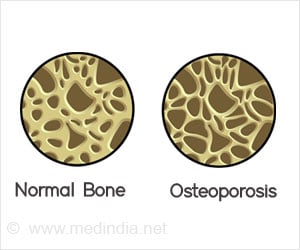Official data indicates that almost ten per cent of the people of the US went hungry in 2006, an embarrassing data.
In the United States of America, supposedly the most powerful and wealthiest nation on earth, more than one in 10 people went hungry in 2006. Clearly government food stamp programs are falling far short of requirements.
Only a couple of days ago, it was noted food banks were running short, placing the survival of the poor and marginalized in jeopardy.More than 35 million people in a country of some 294 million went hungry, 390,000 more than in 2005, according to the U.S. Department of Agriculture's latest Household Food Security report.
Of the total, 12.63 million were children. Put another way, nearly one in five U.S. children either went without enough food during the course of the year or had food but could never take future meals for granted.
The report comes as Congress debates the 2007 Farm Bill, a five-year piece of legislation affecting everything from agricultural subsidies to nutritional programmes for the poor, notes Abid Aslam of IPS News.
Anti-hunger activists lamented the findings.
"The U.S. is the only industrialised nation that still allows hunger within its borders," said David Beckmann, president of the advocacy group Bread for the World.
Advertisement
"As costs for food, energy, and housing continue to rise and wages stagnate or decline, households are finding themselves increasingly strapped," Weill said. "This may mean even worse numbers in 2007. We need to do more to make sure that households have access to healthy food by improving and expanding proven programmes that help."
Advertisement
The programme provides food stamps to more than 26 million people every month, enabling them to use the tokens in place of cash to purchase specified foodstuffs. According to Beckmann and Weill, the relief is insufficient.
"The average benefit of one dollar per meal per person is just not enough to buy adequate, nutritious food," said Beckmann.
Added Weill: "Congress is considering the farm bill, which includes the food stamp programme. They have the chance to make it easier for households to access the programme, keep benefits growing with the cost of living rather than losing ground to inflation, and raise the allowable asset and minimum benefit levels for the first time in decades."
According to the food security report, the latest in a series begun in 1995, 10.4 percent of all U.S. adults and 17.2 percent of all children suffered food insecurity in 2006.
Of the 35.52 million food insecure U.S. residents, 11.1 million lived in households marked by "very low food security," a new term for what the government used to call "food insecurity with hunger". The figure rose from 10.8 million in 2005, consistent with other surveys showing worsening conditions among the poorest.
Black and Hispanic households suffered the most, with food insecurity rates of 21.8 percent and 19.5 percent respectively.
The latest findings chime with recent government reports showing poverty was largely unchanged five years after the U.S. economy began clawing its way back from recession.
Modest gains in household income have failed to lift significant numbers out of poverty, the U.S. Census Bureau reported in August.
The national poverty rate fell to 12.3 percent in 2006, down from 12.6 percent the year before, but remained well above the 11.3 percent mark recorded in 2000, the last year in which it dropped.
The census bureau said family earnings had risen modestly because more members were working and contributing to household income but that not everyone had benefited.
In the countryside, poverty had stagnated at 15.2 percent, three percentage points above the national average. In all, nearly 7.2 million inhabitants of rural areas fell below the poverty line last year despite rising agricultural prices.
The elderly accounted for much of last year's improvement and, as a group, were better off than they were in 2001. By contrast, poverty rates for children and for adults of working age remained statistically unchanged from 2005 and higher than in 2001, when the last recession bottomed out.
Overall, some 36.5 million people were deemed poor in 2006, about as many as in 2005, the census bureau said.
Source-Medindia
GPL/P







